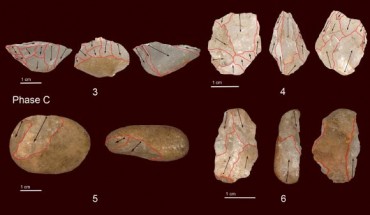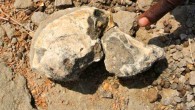An international team of archaeologists has found a collection of microliths — small, retouched, often-backed stone tools — at the cave site of Fa-Hien Lena in the tropical evergreen rainforests of Sri Lanka. Some of these microliths are 45,000 years old and represent the earliest evidence of such advanced technology in South Asia. Cores from Phase D (48,000-34,000 years ago) and Phase C (13,000-12,000 years ago) of Fa-Hien Lena Cave,...




















